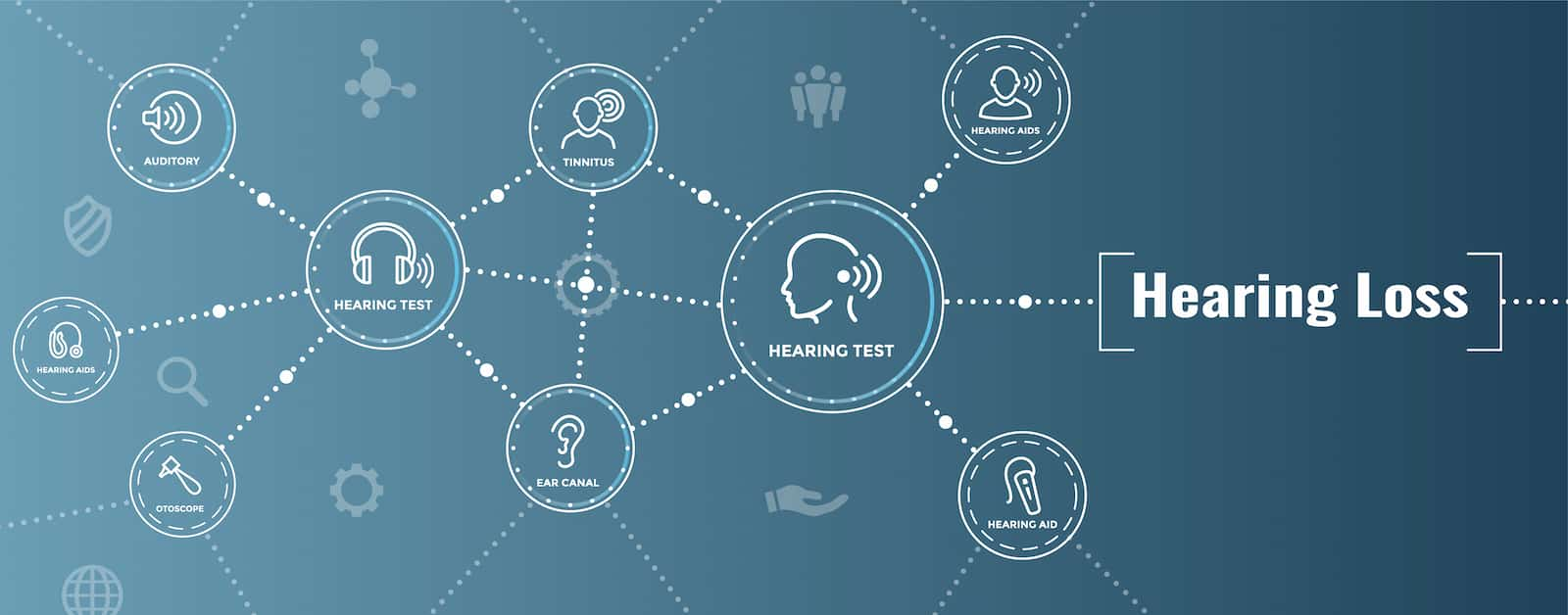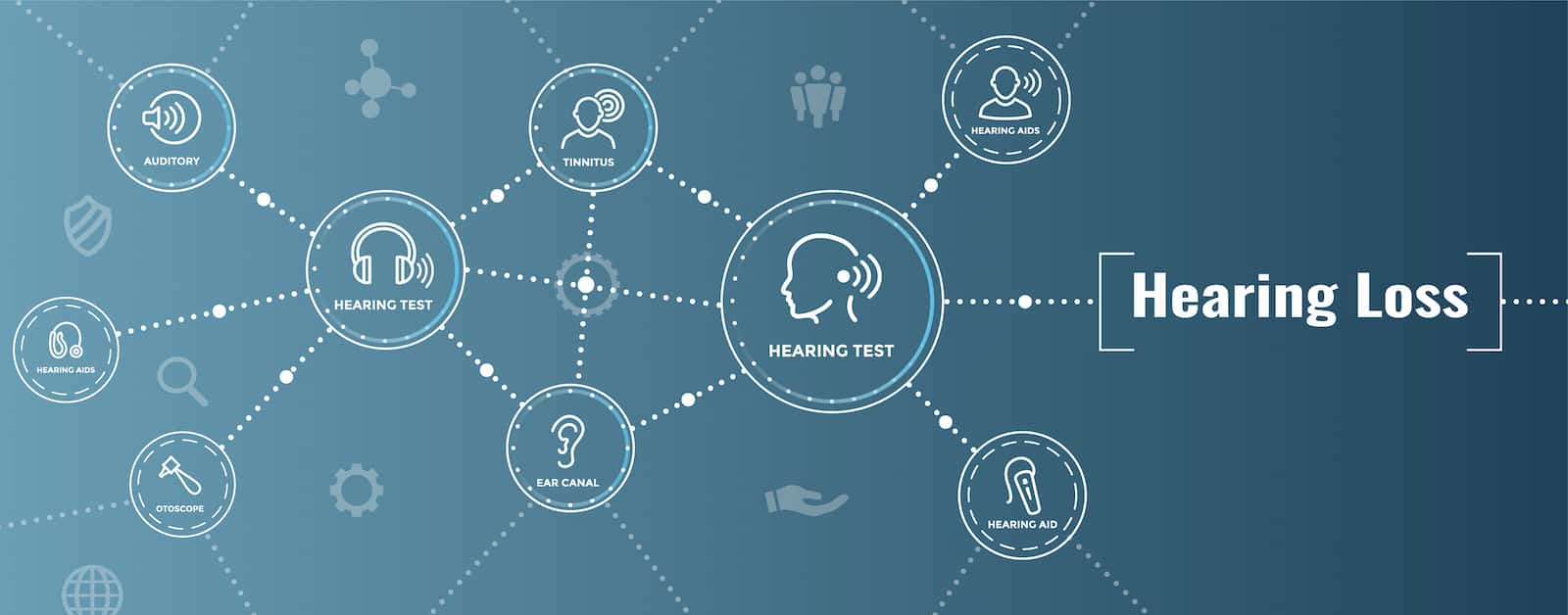Hearing Loss Explained: Normal, Mild, Moderate - Severe, Severe, and Profound
June 21st, 2022 | 4 min. read
By Admin


The ear comprises many parts that work in tandem to enable us to hear the world around us. These crucial parts of the ear include the inner ear, the middle ear, the outer ear, and the auditory nerve. Each part of the ear must work together for us to process and absorb words spoken to us. When one or more parts of the ear are damaged, hearing loss can occur.
What is hearing loss?
Hearing loss is defined as a partial or complete loss of hearing. It may be the result of a congenital defect (present at birth), injury or illness, exposure to loud noises, or age-related wear. Hearing loss affects approximately 15 percent of the American adult population over the age of 18 years (more than 37 million).
Hearing loss is categorized into five main categories, ranging from mild to profound in severity. It can be unilateral or bilateral meaning that it affects one or both ears, respectively. Some people experience difficulty hearing whispers and water babbling in a brook or stream, while others can only communicate through ASL sign language and lip-reading.
Hearing loss may be caused by:
- Chickenpox
- Mumps
- Meningitis
- Sickle cell disease
- Syphilis
- Lyme disease
- Hypothyroidism
- Diabetes
- Arthritis
- Damage or trauma
- Exposure to second-hand smoke
Classifications of the Severity of Hearing Loss
Hearing is measured through various tones, pitches, and volumes. A licensed audiologist uses various tests and tools to measure the Hertz and Decibels (dB) at which you experience optimal hearing to determine if you are experiencing hearing loss.
Normal hearing loss
The normal standard of hearing is defined as the absence of hearing loss. A normal, healthy adult without hearing difficulties experiences a hearing threshold of 0 to 25 decibels. Though a person may experience difficulty hearing in loud spaces or at a live concert, this is normal and is not indicative of hearing problems.
Mild or moderate hearing loss
A person living with mild or moderate hearing loss has a hearing threshold of 26 to 40 dB. They experience difficulty understanding quietly spoken words or whispers, soft-spoken people, and children. Though people with moderate hearing loss can communicate and respond quite well, they may have a hard time keeping up with a conversation with loud noises in the background.
Moderate to severe hearing loss
Moderate to severe hearing loss affects more than 12 million people in the United States. People experience extreme difficulty understanding consonant and vowel sounds during conversations both in-person and via phone call. Without using a hearing aid or assistive device, hearing becomes more difficult in conversations at home or the ability to hear light traffic. Moderate to severe hearing loss is accompanied by a hearing threshold of 41 to 59 dB, however, with hearing aids a person can lead a normal life.
Severe hearing loss
The severe hearing loss leaves a person unable to hear during normal conversations with little to no background noise without the use of hearing aids. A person with severe hearing loss has a hearing threshold of 60 to 89 decibels. Not only is hearing nearly impossible without the use of hearing aids, but speech becomes more difficult as well. A person may not be able to hear their alarm clock ringing, loud traffic, or a train approximately 50 feet away.
Profound hearing loss
The profound hearing loss leaves a person unable to hear without a very strong hearing aid or implant. Without assistive devices, a person relies primarily on lip-reading and sign language to communicate. A person with profound hearing loss cannot hear loud noises, fire alarms, airplanes, or loud traffic without assistive devices.
Need a Hearing Assessment/Test/Aids in Houston?
How hearing loss classifications are diagnosed during a hearing test by an audiologist
Hearing loss is diagnosed by a medical professional, like an audiologist, after careful evaluation, including a physical examination and hearing loss tests, to determine the degree of hearing loss present.
Physical Examination and Questions
Your doctor will begin by asking you a few questions to assess if you are having trouble hearing such as:
- Do you find yourself having to turn the television or radio up much louder than usual?
- Do you have to constantly ask friends and family to repeat themselves?
- How much time do you spend in a noisy environment?
- Is it difficult to maintain a conversation with multiple people talking?
During a physical examination, an audiologist will visualize the ear canal to determine if there is a problem within one or more parts of the ear. This may include a foreign body obstructing the ear canal, excessive amounts of earwax buildup, fluid inside the ear canal, an infection in the middle ear or ear canal, or a hole in the eardrum itself.
Once the physical exam is complete, if it is determined that your hearing loss is not the result of a foreign obstruction or infection that can be treated with medication, you will be sent for further testing.
The audiometer test
An audiometer test is conducted to determine if hearing loss is present in a patient, as well as the degree of loss. Headphones are placed on the head of a patient and the audiologist will play several sounds, one ear at a time, at varying tones, pitches, loudness, and decibel levels.
The patient is instructed to raise their left or right hand, whichever side they hear the noise on, to alert the medical team that they have heard the frequency played. This test is an excellent way for an audiologist to determine what you can and cannot hear.
Auditory brainstem response (ABR) test
Hearing loss affects people of all ages, from infancy into late adulthood. An infant or toddler is less likely to accurately signal each sound heard during an audiometer test. When an audiometer test is either unsuccessful or contraindicated, an audiologist will perform an auditory brainstem response test.
This is conducted by placing several electrodes on the child’s head and near the ears to measure the brain's response to various sounds played through small ear plugs placed inside the child's ear.
Hearing loss may occur at any age of life, therefore experts recommend routine screening in children for early detection, intervention, and prevention. It is recommended to have your child’s hearing examined:
- At birth
- When they begin school
- Ages 6, 8, and 10
- At least once in middle school
- At least once in high school
Treatment options for hearing loss vs doing nothing
Treatment options for hearing loss are an individualized approach based on the degree of hearing loss and cooperation from the patient. For example, a person experiencing mild hearing loss may not require extensive treatment, while someone with severe or profound hearing loss will not be able to hear without the use of hearing aids or implants. If the patient refuses, they will continue to have difficulty hearing that may worsen over time.
Houston Hearing Center is here for you!
At the Houston Hearing Center, we understand the importance of hearing as well as the impact it can have on a person’s life when they cannot hear simple conversations. We have spent more than 100 years serving the Houston community and helping them to hear better one appointment at a time.
If you are concerned about your or your child’s hearing, schedule an appointment today.
Lorem ipsum dolor sit amet, consectetur adipiscing elit, sed do eiusmod tempor incididunt ut labore et dolore magna aliqua. Sed risus ultricies tristique nulla aliquet enim.
Topics: